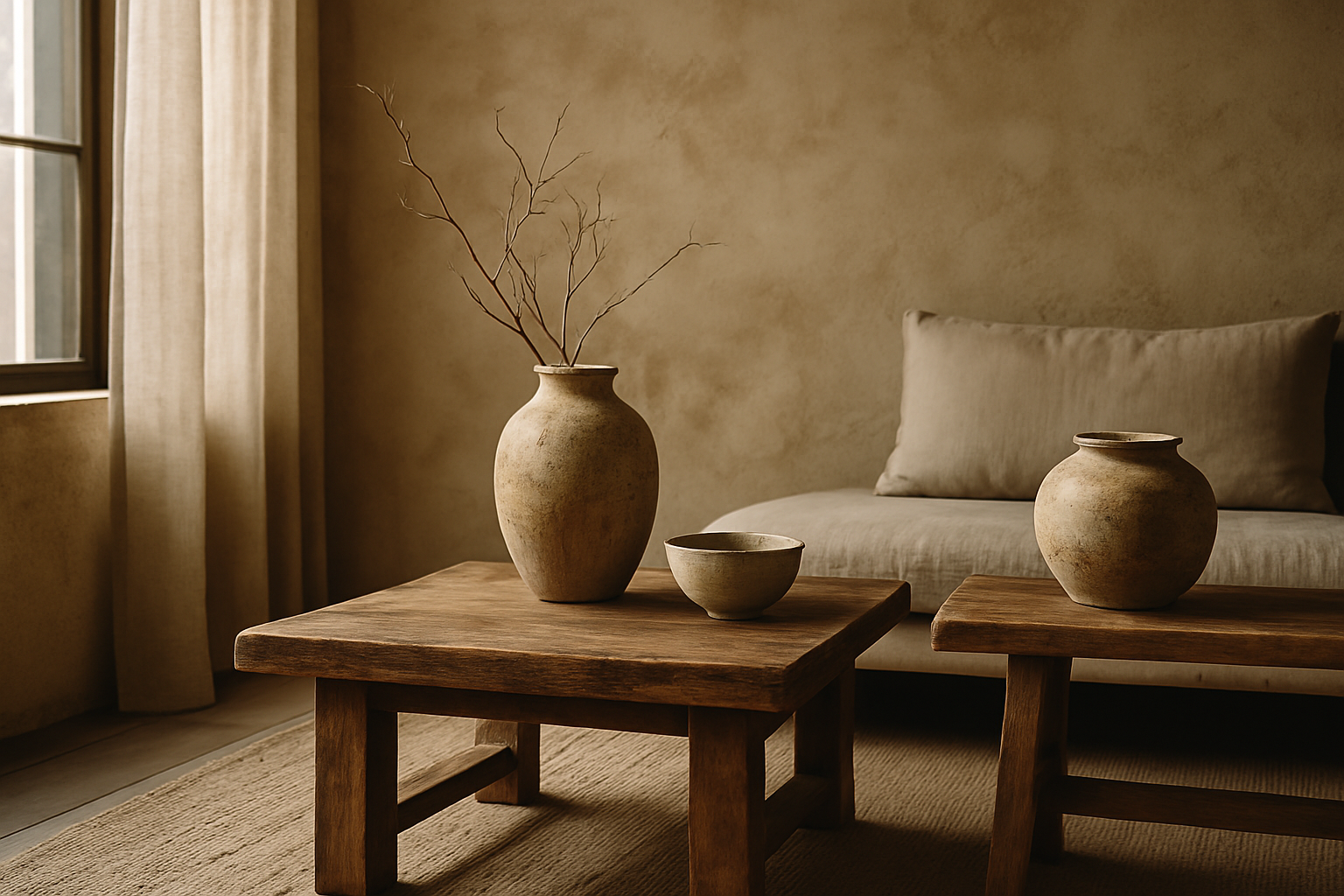Transforming Spaces with Wabi-Sabi: The Art of Imperfect Beauty in Home Design
In a world obsessed with perfection, a quiet revolution is taking place in home design. Wabi-sabi, an ancient Japanese philosophy that embraces imperfection and transience, is making its way into modern interiors, offering a refreshing counterpoint to the polished aesthetics that have long dominated the design world. This profound approach to living and decorating is not just a trend, but a mindset that can transform how we perceive and create our living spaces.

Origins and Philosophy of Wabi-Sabi
Wabi-sabi finds its roots in 15th century Japanese tea ceremonies, where rustic, handmade tea bowls were prized over perfect, mass-produced ones. The term combines two concepts: wabi, which refers to simplicity and a detachment from worldly possessions, and sabi, which embraces the beauty that comes with age and wear.
In the context of home design, wabi-sabi translates to an appreciation for natural materials, organic forms, and objects that tell a story through their imperfections. It’s about creating spaces that feel lived-in, authentic, and deeply connected to nature and the passage of time.
Incorporating Wabi-Sabi Elements in Modern Homes
Embracing wabi-sabi doesn’t mean completely overhauling your space. It’s about subtle shifts in perspective and thoughtful additions that bring a sense of calm and authenticity to your home. Start by introducing natural materials like unfinished wood, stone, and clay. These elements bring texture and warmth, creating a grounding effect in any room.
Consider furniture and decor items with visible imperfections - a table with knots in the wood, a vase with an uneven glaze, or a rug with subtle variations in color. These imperfections add character and depth to your space, making it feel more personal and lived-in.
The Role of Patina in Wabi-Sabi Interiors
Patina, the gentle wear that comes with age and use, is a key element in wabi-sabi design. Instead of hiding or replacing items that show signs of aging, celebrate them. A leather chair that’s softened with use, copper fixtures that have developed a natural verdigris, or wood floors that bear the marks of years of footsteps - these elements add richness and story to your home.
To incorporate patina into newer spaces, consider vintage or antique pieces. Mix these with contemporary items for a balanced, eclectic look that honors both past and present.
Minimalism and Wabi-Sabi: Finding the Balance
While wabi-sabi shares some principles with minimalism, such as an appreciation for simplicity, it diverges in its embrace of imperfection and the organic. Where minimalism often seeks sleek, clean lines, wabi-sabi finds beauty in the irregular and asymmetrical.
In practice, this might mean choosing a handmade ceramic vase over a mass-produced one, or opting for linen bedding that naturally wrinkles instead of crisp, ironed sheets. The goal is to create a space that feels both curated and effortlessly lived-in.
Color Palettes and Textures in Wabi-Sabi Design
The color palette in wabi-sabi interiors tends to be muted and earthy, mirroring the tones found in nature. Think soft greys, warm browns, and gentle greens. These colors create a calm, harmonious backdrop that allows textured elements to shine.
Textures play a crucial role in bringing depth and interest to wabi-sabi spaces. Rough-hewn wood, nubby linens, and raw clay all contribute to a tactile, sensory experience. Layer these textures thoughtfully to create a rich, inviting environment that begs to be touched and experienced.
The Psychological Benefits of Wabi-Sabi Spaces
Beyond aesthetics, wabi-sabi interiors can have profound effects on our well-being. In a world that often feels chaotic and demanding, these spaces offer a sanctuary of calm and authenticity. By surrounding ourselves with objects and environments that embrace imperfection, we give ourselves permission to do the same.
This approach to design can reduce stress, promote mindfulness, and foster a deeper connection to our living spaces. It encourages us to slow down, appreciate the present moment, and find beauty in the subtle and often overlooked aspects of our daily lives.
In embracing wabi-sabi, we’re not just changing our homes; we’re shifting our perspective on beauty, perfection, and what truly matters in our living spaces. It’s a gentle reminder that our homes, like ourselves, are works in progress - constantly evolving, imperfect, and all the more beautiful for it.





